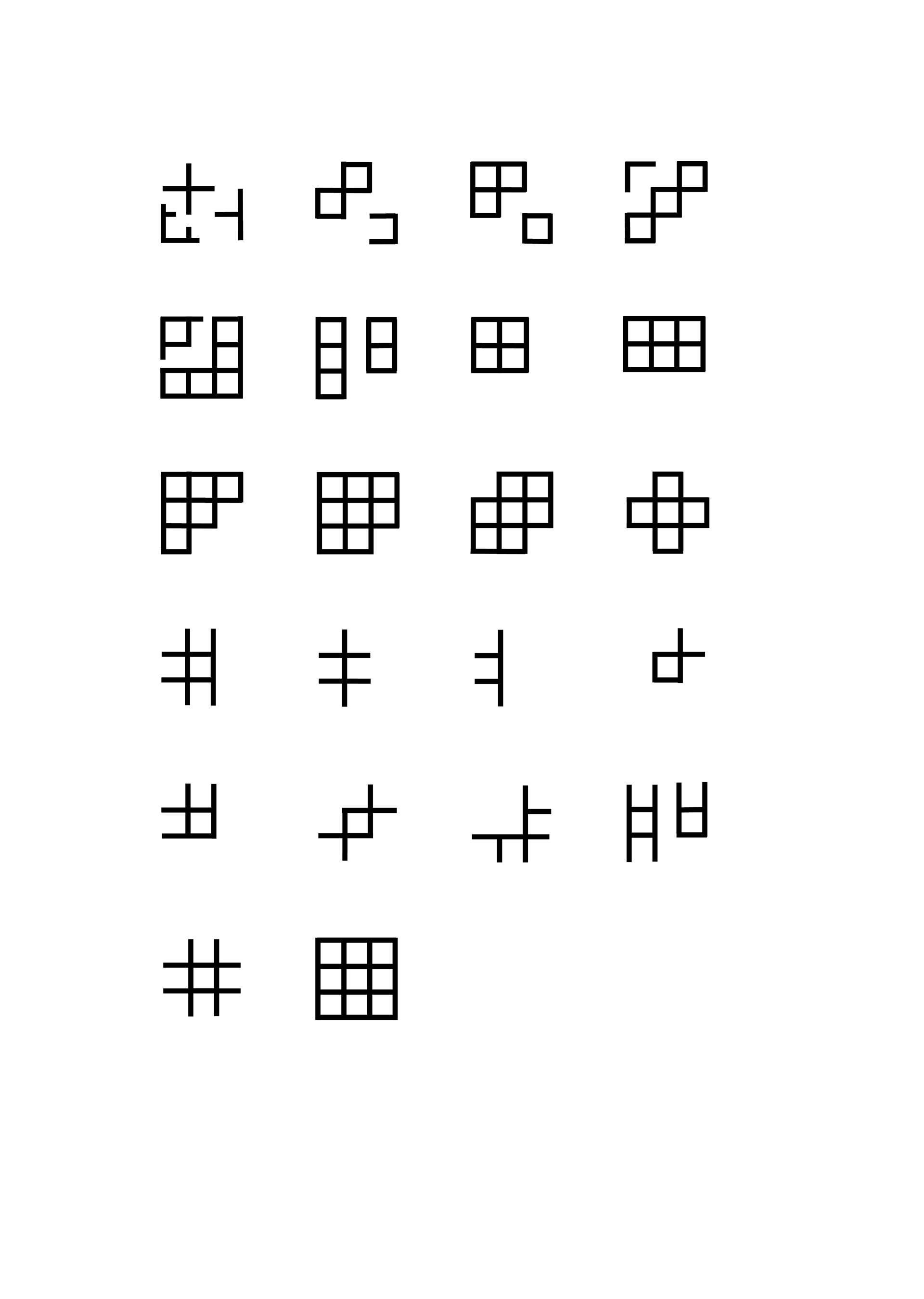Project Type
University (Real Job Scheme)
Role
Artist & Curator
Aim
Take part in the experiment from a designer's point of view and collate all the different results into a series of booklets for the client's end of year art exhibition.
The analysis brief
1. Take the simplest form of a 9 cell grid, in an open and closed format
2. Exhaustively analysis all the points of interest, edges, intersections, lines and spaces
3. Use cropping and enlargement to help realise the full abstract potential
4. Draw all the defining properties
5. When you have isolated all the possible permutations arrange the drawings into lines of types that share characteristics



Experiment Solution
For my version, I was focused on the lines that created borders for the space within the grid. As I was creating them digitally, I started experimenting with stroke weight to see how this affected the lines and space. This became the underlying theme for my arrangement and later my booklet design as it lead me to the idea of them being similar to a typeface.
For my arrangement, I came up with three layout versions, Families, Order and Cycle.
Families - Organised into two families. The first was looking at the building of blocks and the second was looking at the single lines multiplying
Order - Ordering them into progression of area
Cycle - Combining the different elements of the grid into a 9 by 9 grid and by taking it apart and putting in back together

Families

Ordering

Cycle
Bookelt Solution
For the booklet series it was all about designing a layout that allowed each participant's work standout but have a similar feel as someone reads each of them. I did this creating a layout that had the titles and captions in the same place despite the images of the results being in different sizes.
To match the concept of the experiment, I found a serif type that was angular in design to mimic the grid and reflect the similarities in all of the results with a mixture of white space.
As all of the other participants had used colour in their results for my booklet I applied a band of colour for the front cover that I felt matched the experiment by cutting directly through the cover's space.
Thoughts
This was one of the most unique projects I have worked on. It took a designers tool, a grid, but flipped it on its head by applying an artistic approach of breaking it apart just because. I enjoyed completing the experiment brief as it was fun to take the grid apart bit by bit then try and put it back together in unique ways. Then experimenting with my arrangements and seeing what more I could do with them.
I loved looking through the other participants and seeing how they did it and what they came up with. Also how, for them, they applied colour naturally while that hadn't even occurred to me until creating the cover for the booklet series at the end of the experiment.
This will always be a favourite as it was step away from what I work on these days but somethings I learnt from this project I apply in my work today.






